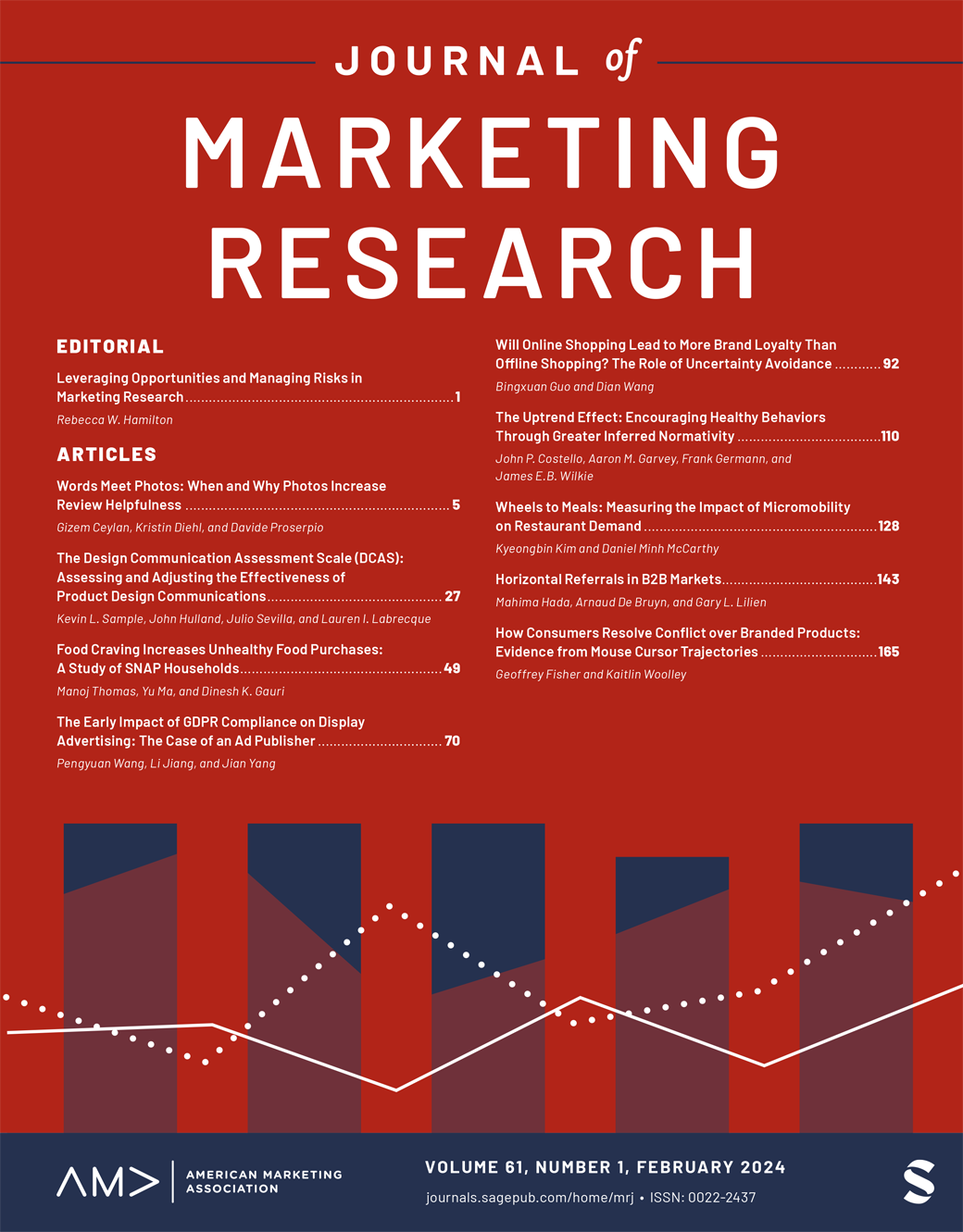手稿的同行评审之旅:来自《市场研究杂志》近3000篇编辑决定的见解
IF 5
1区 管理学
Q1 BUSINESS
引用次数: 0
摘要
作为《市场研究杂志》(JMR)的编辑,我们有幸带领数千份手稿通过同行评审过程。除了作者之外,JMR的同行评审过程还包括评审员、副编辑(AE)和共同编辑(CoE),以及制作和管理编辑。审稿人和AE作为CoE的顾问,在决定发表什么以及向作者提供有助于提高手稿质量的反馈方面发挥着至关重要的作用。尽管同行评审过程具有关键和广泛公认的重要性,但许多人认为同行评审过程笼罩在一定程度的神秘之中,这在一定程度上是保持评估者客观性、保护作者知识产权、最大限度地减少利益冲突以及在我们的双重匿名系统中保持评审员和作者匿名所必需的。我们的独特地位使我们能够访问JMR同行评审过程的幕后数据。这篇社论的目标是使用这些数据来实证描述审查过程,并回答期刊主要利益相关者感兴趣的问题:作者、审稿人、编委会成员和一般研究人员。我们要解决的一些问题如下:本文章由计算机程序翻译,如有差异,请以英文原文为准。
A Manuscript's Journey Through Peer Review: Insights from Almost 3,000 Editorial Decisions at the Journal of Marketing Research
As editors of the Journal of Marketing Research (JMR), we have had the privilege of shepherding thousands of manuscripts through the peer review process. In addition to authors, the peer review process at JMR involves reviewers, associate editors (AEs), and coeditors (CoEs), as well as production and managing editors. Reviewers and AEs play a crucial role as advisers to CoEs in deciding what to publish, as well as in providing feedback to authors that can help improve the quality of manuscripts. Despite its critical and widely acknowledged importance, many see the peer review process as shrouded in a degree of mystery, which is necessary in part to maintain objectivity of evaluators, protect authors’ intellectual property, minimize conflicts of interest, and preserve the anonymity of reviewers and authors in our double-anonymized system. Our unique position provided us access to behind-the-scenes data about the peer review process at JMR. The goal of this editorial is to use these data to empirically describe the review process and answer questions that are of interest to key stakeholders of the journal: authors, reviewers, editorial board members, and researchers in general. Some of the questions that we address are as follows:
求助全文
通过发布文献求助,成功后即可免费获取论文全文。
去求助
来源期刊

Journal of Marketing Research
BUSINESS-
CiteScore
10.30
自引率
6.60%
发文量
79
期刊介绍:
JMR is written for those academics and practitioners of marketing research who need to be in the forefront of the profession and in possession of the industry"s cutting-edge information. JMR publishes articles representing the entire spectrum of research in marketing. The editorial content is peer-reviewed by an expert panel of leading academics. Articles address the concepts, methods, and applications of marketing research that present new techniques for solving marketing problems; contribute to marketing knowledge based on the use of experimental, descriptive, or analytical techniques; and review and comment on the developments and concepts in related fields that have a bearing on the research industry and its practices.
 求助内容:
求助内容: 应助结果提醒方式:
应助结果提醒方式:


